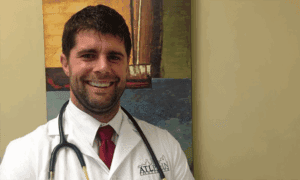The tragedy at Sandy Hook Elementary School in December has spurred an international debate on guns and their availability in the United States. The debate has raged the past few weeks over guns, the second amendment to the Constitution, and political agendas.
I’ve followed a number of discussions ranging from political commentary, to editorials, to professional clinical discussion boards on the issue and there is no doubt that our country is deeply divided on this issue.
One side of the argument is that the Constitution clearly gives citizens the right to keep and bear arms. This right has been upheld by the Supreme Court (District of Columbia v. Heller). In 1787, James Madison wrote in the Federalist Papers that this right was specifically included in the Bill of Rights so that the people could protect themselves from a tyrannical government. It is argued that motivated criminals will find a way to acquire weapons if they want them – despite the law. After all, Columbine happened at a time that assault weapons were banned.
The other side of the argument is also persuasive. Almost 30,000 people in the United States die each year by firearms.This includes homicides, accidents, and suicides (the largest category). We already have gun control (you can’t have a Howitzer in your front yard), strict licensing and registration already exists for automobiles, drugs, and other dangerous materials. Finally, stricter laws may at least keep some criminals off the streets.
But my purpose isn’t to persuade you one way or another. The argument is so laden with emotion that I probably couldn’t do it no matter what data I provided. Instead, let’s talk about what we can do as parents to protect our children, regardless of what the government chooses to do.
A 2012 report by the “Children’s Defense Fund” demonstrated that in 2008, over half of all firearm deaths to children under age ten were accidents or suicides. In 2008-2009, one quarter of children and teens who were injured by firearms were injured in gun accidents. While the staggering homicide rate should concern us all, we could greatly reduce deaths and injuries to children and teens simply by being more careful with firearms. Here are some safety tips to protect your children.
If you are a gun owner, secure your weapons. Trigger locks, barrel cable locks, storing ammunition separate from the weapon, and storing guns in gun safes are ideas. Local law enforcement agencies often provide cable locks for free to gun owners who want them.
Teach your children gun safety. Children should learn they are to never touch a firearm without adult supervision and adults should model safe gun handling.
Behave as if you believe a gun is always loaded. Semi-automatic weapons can carry a round in the chamber even if the clip is out of the gun. Some guns cannot fire in this situation, but many do. The first thing anyone should do when picking up a weapon is to open the breach and ensure the firearm is clear of ammunition.
Never play with a firearm. This sounds like a no-brainer, but numerous deaths occur each year because the gun user was carelessly ejecting shells for the fun of it, showing off a weapon, or feigning to shoot someone as a joke with a weapon he/she believed to be unloaded. Generally, a weapon should never even be pulled from the holster unless necessary to load it, unload it, secure it, or fire it.
Hunters, take the required free hunter safety course. Know when to unload your weapon (i.e. crossing a fence), how to carry it safely, when to shoot at perceived prey, and always wear your safety orange. Know what is beyond your target and always control the muzzle.
If you are not a gun owner, it doesn’t mean that your children cannot come into contact with firearms. Do you know what homes your child visits where guns are present? Ask the parents of your child’s friends how they secure their weapons. This is a sensitive question, but if they are not willing to demonstrate that their weapons are secure, don’t let your children play in that house.
The President repeatedly identified his ideas on gun control as “sensible.” Some might challenge his definition of sensible, but that debate is for another place and time. What most would agree upon is that it is sensible for us to keep our children safe where we can, with or without new laws. That is a sensible step that could save thousands of lives each year.
Gregory K. Moffatt, Ph.D.
gregmoffatt.com












Leave a Comment
You must be logged in to post a comment.